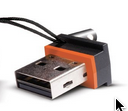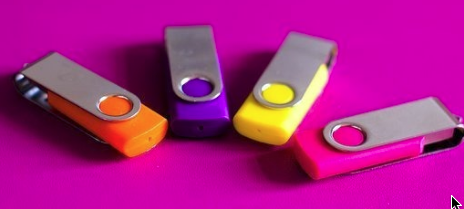Hi farmers,
I think there is often this question coming up in the DIY community:
Do I need to leave the USB key on my 3node once it has properly booted?
The answer is: yes. It is advised. Why? Because…
The node needs the USB key plugged in to boot Zero-OS properly. The 3node uses the USB key to connect to the Internet and download what is needed to boot 100% correctly Zero-OS.
Once your node has been booted with Zero-OS via the USB key, you can remove the USB key, but if something happens and the node needs to reconnect with the network, it won’t be able to do so. We advise people to let the USB key always in so the node can reconnect with the network if needed. As Scott explains:
Some DIYers will thus choose a small USB key such as this one:

This has the advantage of taking fewer space. Note that you don’t need a lot of storage on the USB key, so this could help cut costs. The v.3 Zero-OS .img is 2.1 MB as of 01-2022.
Also, some DIYers will use a USB key that has a “light” on when it is properly booted, this can help you know with a quick look that the node is still online and running. Next picture shows some model of a USB key that has a light included. The light flashes when it is being used (in this case, when the 3node is actively connecting online to the network), it stays open when Zero-OS is running normally, and it will shut down its light when the computer is off.

I won’t post the links to buy the USB keys. DYOR.
Also, note that the Zero-OS Boostrap Image you used to boot your first 3node can be duplicated/flashed on another USB key for an additional 3node. You do not need to redownload the image. You can simply flash another USB key (on Balena Etcher, or else). The reason is simple: your 3node simply needs to know your Farm ID to link properly, and the Farm ID is on the Zero-OS Bootstrap Image you downloaded on the website: https://v3.bootstrap.grid.tf/ (currently for Grid v3) and https://bootstrap.grid.tf/ (for Grid v2)
(Make sure to choose production mode)
For an amazing 3node DIY guide:
If you have questions or want to comment on this, feel free to do so!
If I have not been clear in my explanations, please tell me where I went wrong, and I will update the post.
Have a good day, you Farmer of the New Internet!

 and super grateful you are such an active and collaborative Farmer of the New Internet
and super grateful you are such an active and collaborative Farmer of the New Internet  AHO my friend! continue to shine this light into the world
AHO my friend! continue to shine this light into the world  Thank you for being you.
Thank you for being you.